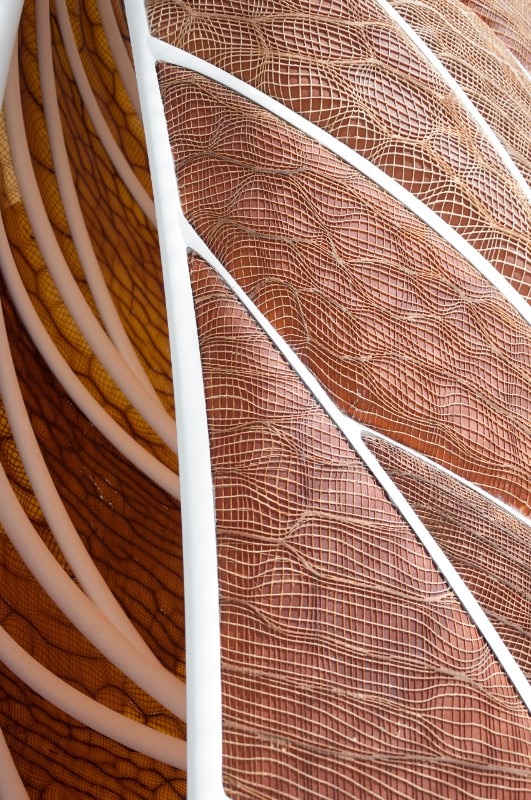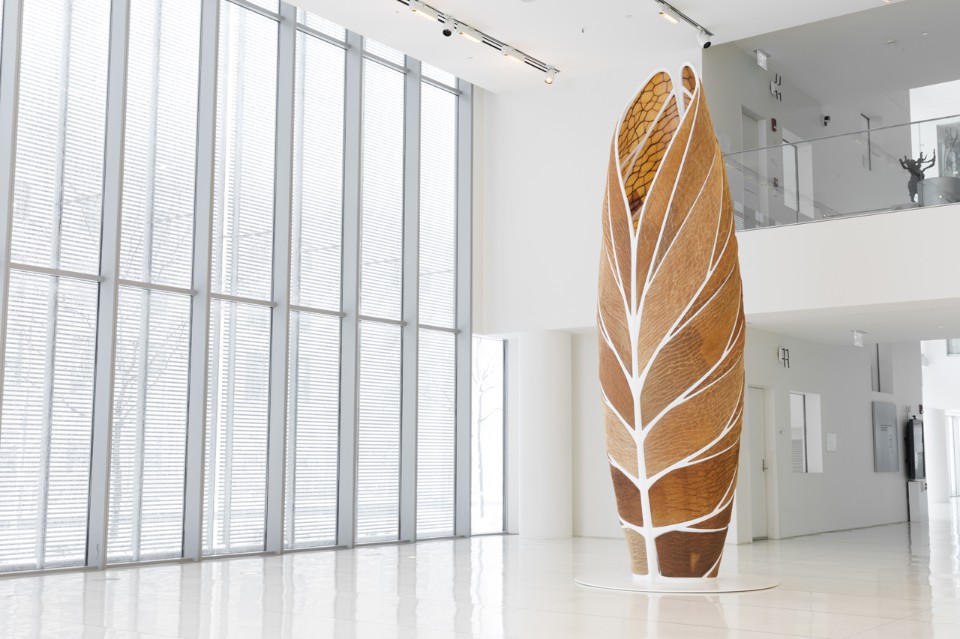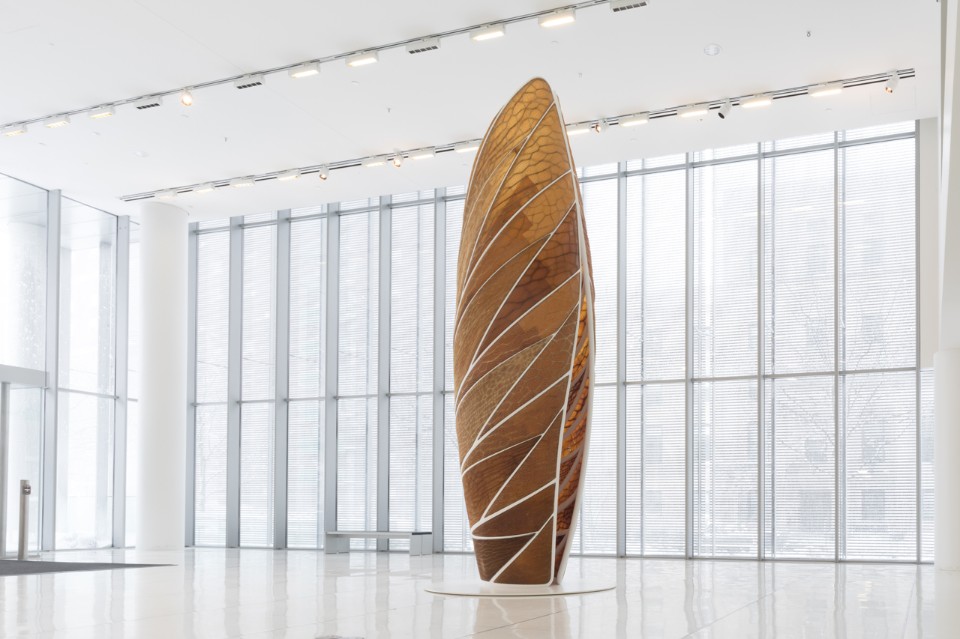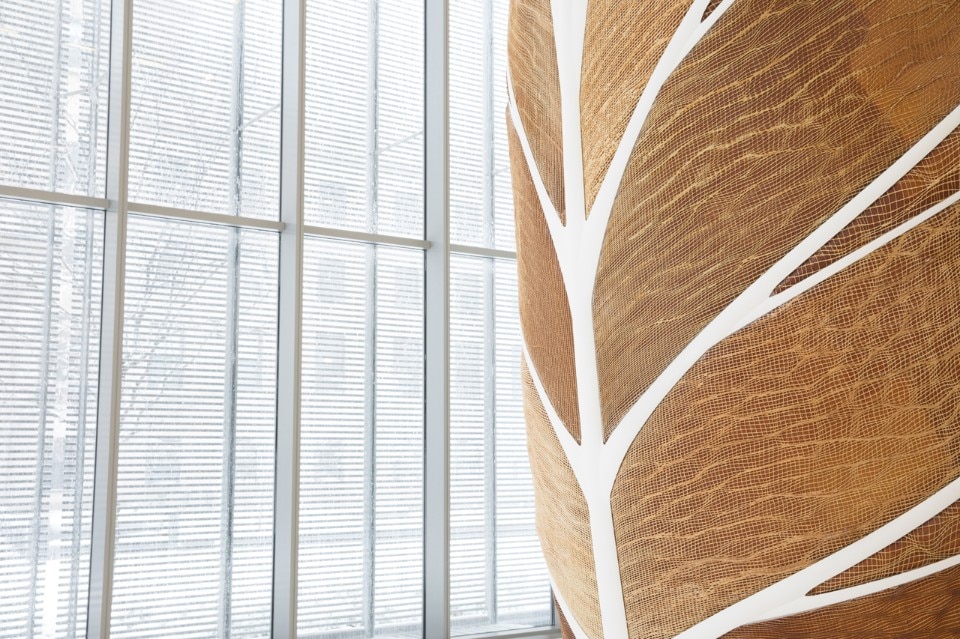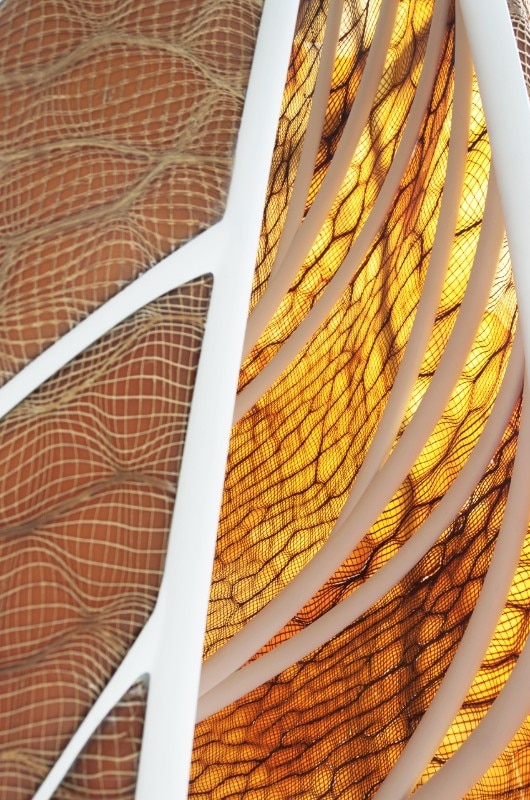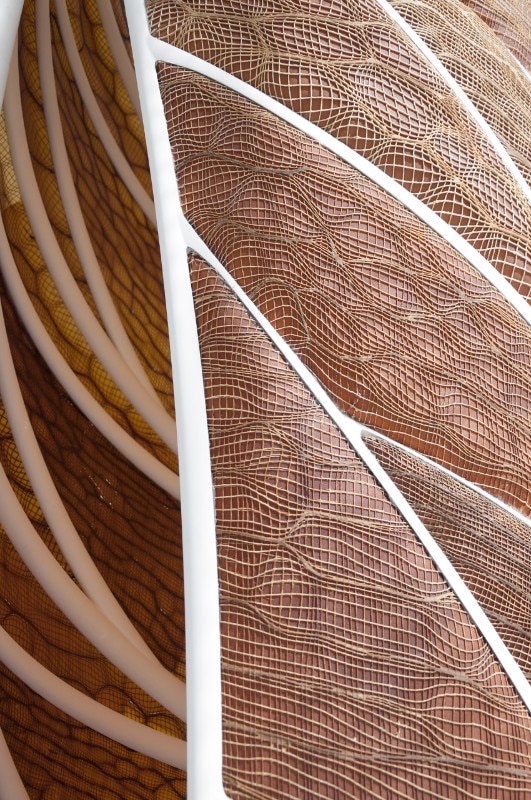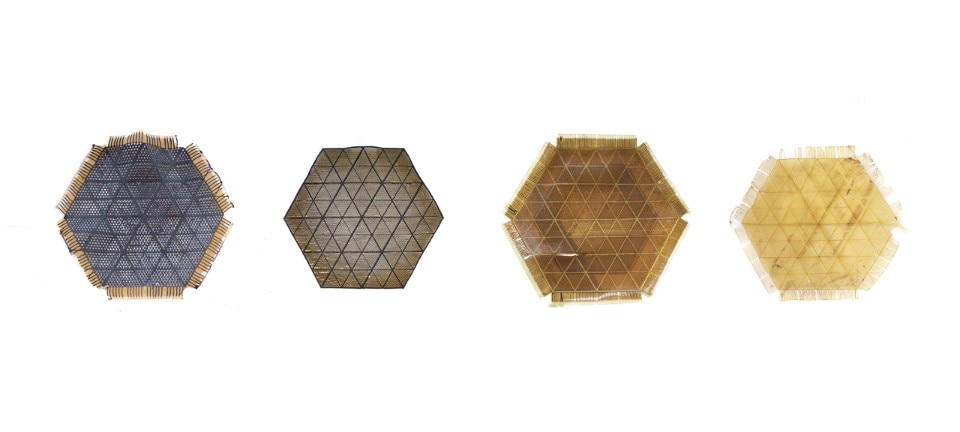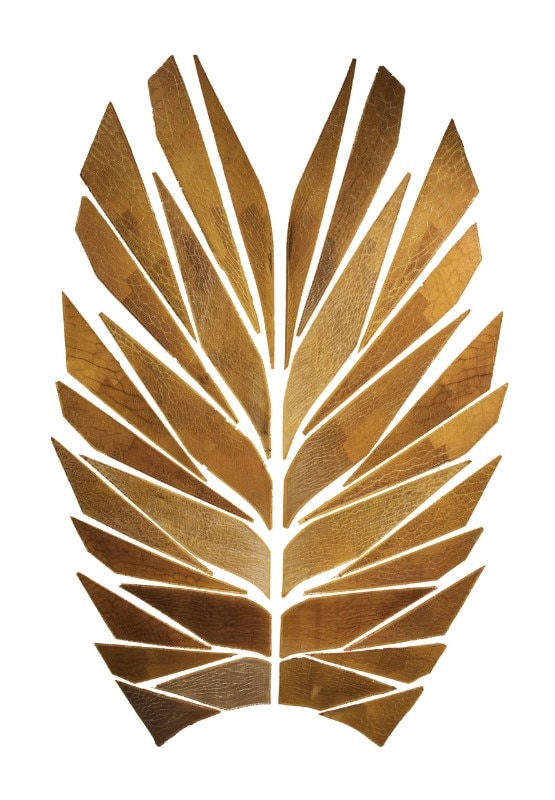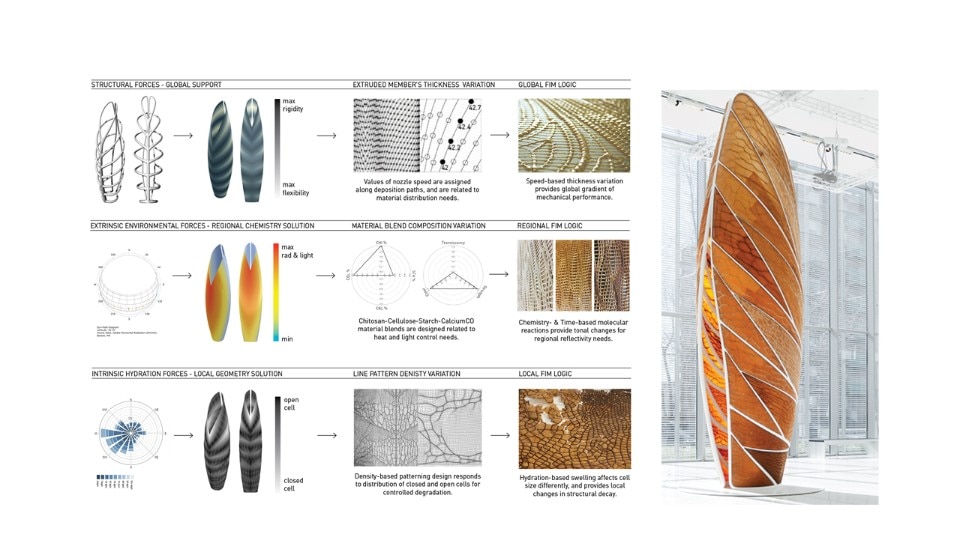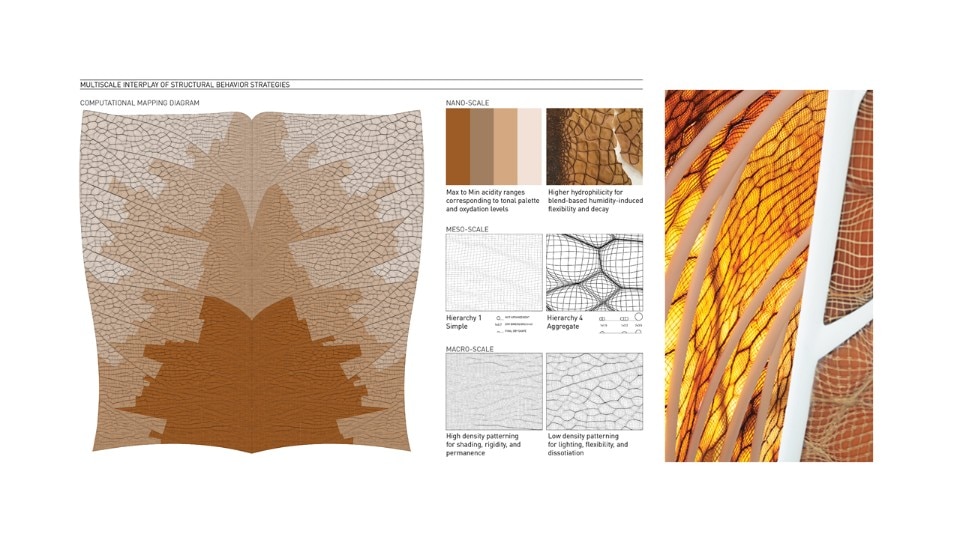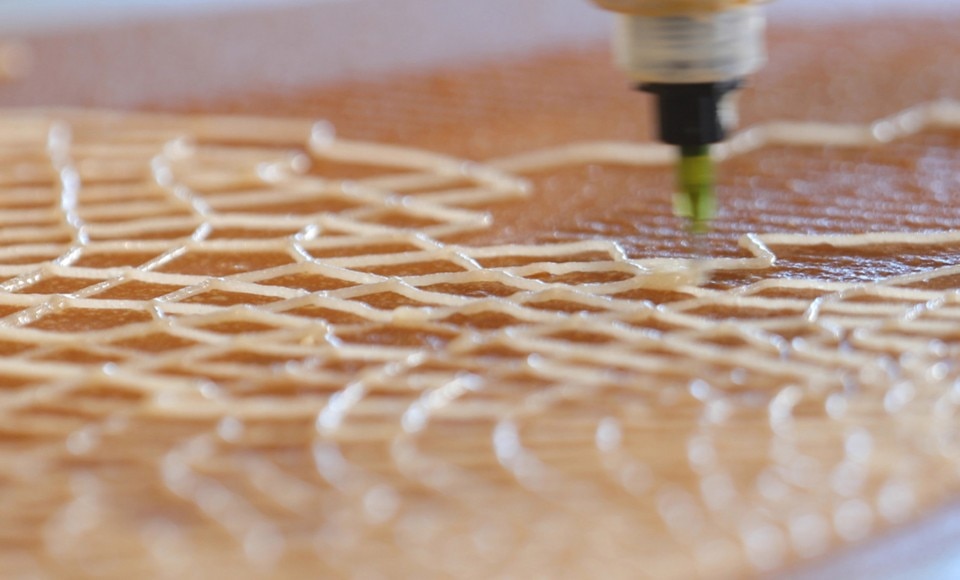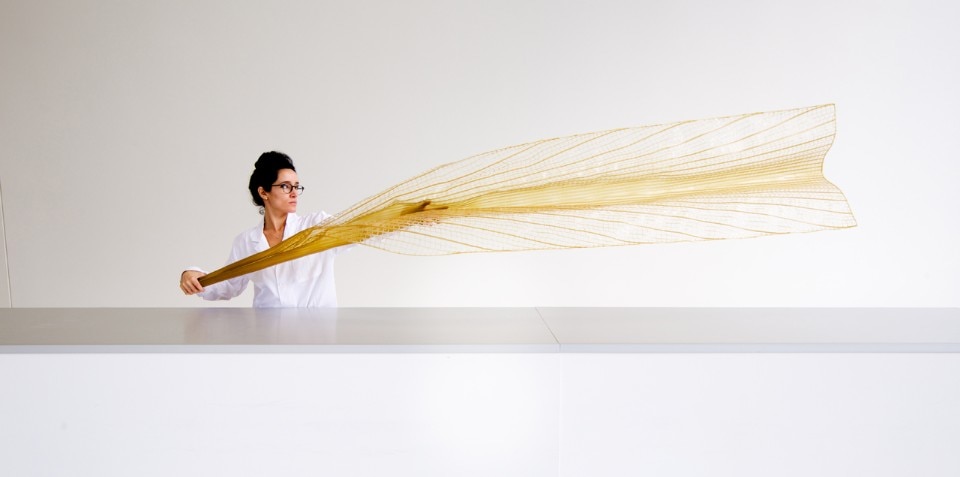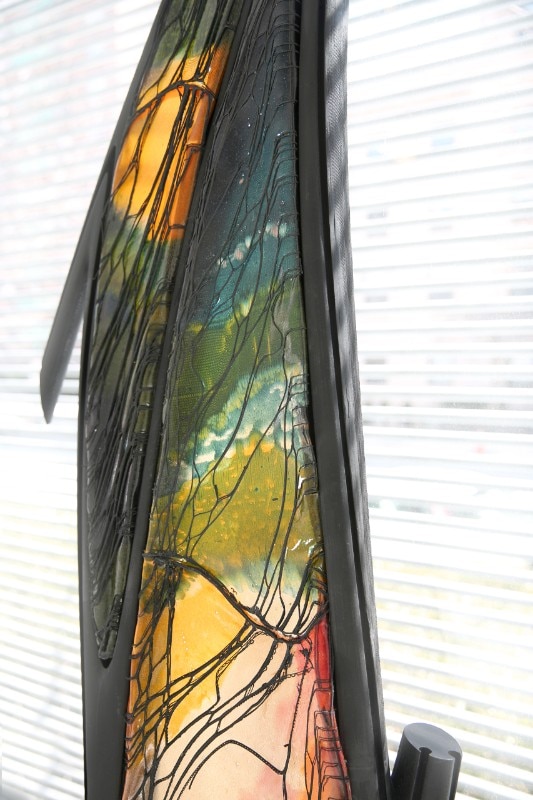Perhaps Neri Oxman has the energy and foresight of a demiurge of the third millennium, more than any other contemporary designer. The strength of the impact with which she started a revolution that involves architecture and microorganisms, in collaboration with her Mediated Matter research group within the MIT Media Lab in Boston, is based on a two-fold approach. On the one hand, Oxman employs the cutting-edge instruments provided by technological innovation in order to promote a new production era based on nature-inspired engineering. On the other hand, she combines these new opportunities for production with a radical methodological rethinking, which makes this interdisciplinary combination of science, biology, design and art capable of facilitating a more sustainable physiognomy of the world. These characteristics make her one of the most significant innovators of recent years, and her work has represented a benchmark for many architects and designers after her.
In nature, there is no separation between design, engineering, and fabrication; the bone does it all
Neri Oxman
The various experiences she had when she was younger help us better understand how she developed her approach. Neri was born in 1976 in Haifa, and both her parents, Robert and Rivka Oxman, were architects. Oxman spent three years in mandatory military service working for the Israeli Air Force, and then attended two years of medical school at the Hadassah Hospital in Jerusalem: this two experiences might not have had anything to do with her vocation as a designer, but they provided her a vast knowledge on mechanics and test tubes. However, in 2001, Oxman finally decided to follow in her family's footsteps, by enrolling at the Technion – Israel Institute of Technology in Haifa and later by attending the Architectural Association School of Architecture in London, where she graduated. Then, she decided to continue her research at MIT in Boston, first by obtaining a PHD, and then by teaching Material Economy (a term that she coined) as an Associate Professor.
If I was the Terminator, Neri is Terminator 2. I was crappy titanium parts, but she’s like liquid metal
John Maeda
It is impossible to grasp the scope and reach of her work without taking into account the four operational tools that still characterize her field of research today: the Mediated Matter group conducts research at the intersection of computational design, digital fabrication, materials science and synthetic biology, combining material engineering with the ability to achieve new biological functionalities through DNA modification. Thanks to large computing units, custom 3d printers that build themselves and laboratories where new living forms can be modeled, Oxman looks at biological matter as a new collaborative substrate with which to build, following a logic that is completely different from that of the twentieth century. Moving away from the assembly line model, but also from the idea that a product - no matter its dimensions - is the result of the assembly of its components, Oxman looks into the possibility of literally growing its materials in the laboratory and adapting their natural evolution according to designed methods. In this holistic, multi-species vision, organisms are shaped to take on specific forms, functions, and characteristics: it is a more advanced level of organic design that transcends the imitation of nature, and instead focuses on engineering it in order to obtain the desired results.
Think Centre Pompidou without the separate parts, but rather a single and continuous transparent building skin that can integrate multiple functions
Neri Oxman
The organisms with which Neri Oxman experiments prove to be extraordinary allies in reshaping the world of the future. Silkworms, for example, are the material with which she created the “Silk Pavilion” of 2013, which was an installation made of silk threads that also shows a new way to produce the fabric without having to kill the silkworms. The silk dome was designed using an algorithm, and then printed by a robotic arm, with the contribution of 6,500 silkworms, which were weaving their thread around the structure outlined by the computer. Thanks to specific light effects, the silkworms concentrated in some areas of the surface rather than others, helping to modify the thickness of the vault as well as the density and strength of the material.
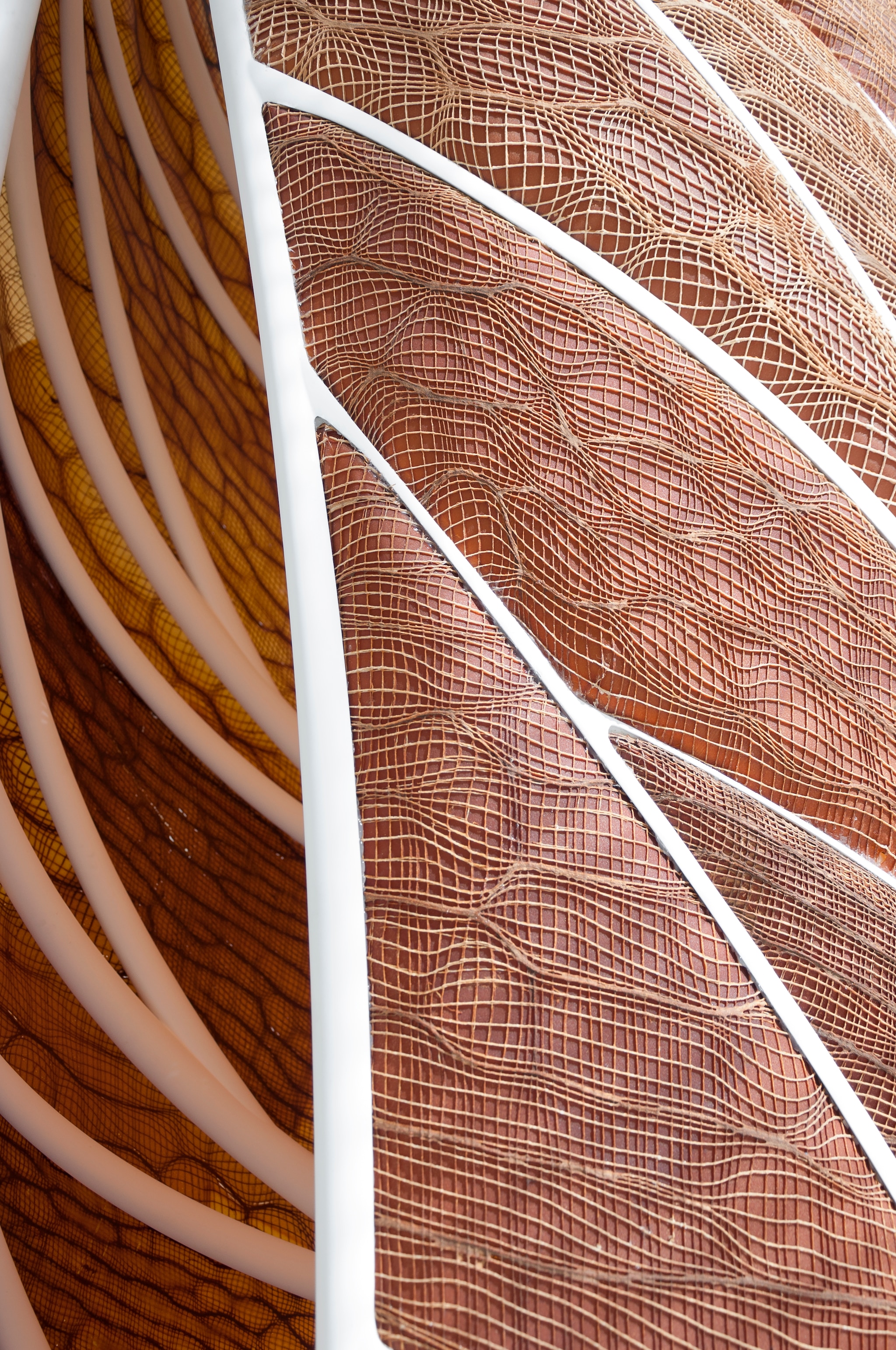
The e.coli bacterium becomes, according to Oxman's vision, a valuable ally in the design of what remains one of her most speculative works, Wanderers. Designed as food reserve for interplanetary voyages, these four wearable "skins" reproduce the shape and function of the human intestine: within it, genetically modified e.coli bacteria can be transformed into sugar reserves when exposed to sunlight. Pheromones, on the other hand, are the biochemical substances that Oxman used in order to realize Syntethic Apiary, a controlled environment which offers precise control of light, humidity and temperature to replicate the ideal environment for bees to survive and produce honey. Commissioned by Triennale Milano, on the occasion of the International Exhibition called Broken Nature, the Totems project exploits melanin as a building material on an architectural scale. Again, with G3DP, Mediated Matter launched the first 3D printers capable of printing optically transparent glass. This additive glass production technology sees in the integration of light refraction mechanisms a potential for new applications, particularly in the solar field. The aesthetic sophistication of her science fiction-looking forms has allowed Oxman to work on many impactful projects and collaborations for the fashion world. For the Icelandic artist Björk, Mediated Group came up with a prosthetic mask, which mimics soft tissue, muscle and rigid bone structure of the face. For Iris Van Herpen, the Voltage fashion collection is made of 3d-printed outfits - once again, conceived as a single material, as opposed to the idea of an assembly of the components - and it stands out for the fabric's capacity to vary in elasticity and softness, following the shapes and movements of the dress.
In 2016 Oxman wrote an essay for the Journal of Design, a joint venture of the MIT Media Lab and the MIT Press, destined to leave an indelible mark on the theoretical debate between science and human sciences. In “The Age of Entangelement”, Oxam talked about the “Krebs Cycle of Creativity”, a disciplinary model where science, engineering, design and art feed and inspire each other, creating a circle of mutual influence that turns information into knowledge, utility and ultimately behavior.
In February 2020, the MOMA in New York inaugurated the first monographic exhibition - “Neri Oxman - Material Ecology“ - dedicated to the work of the Israeli American designer; “a mid-career exhibition”, as defined by the curator Paola Antonelli, Senior Curator of the Museum's Department of Architecture and Design. Antonelli was one of the very first to highlight Oxman's talent, and this exhibition represents another opportunity to underline the double relevance of the designer's work: first, the importance of experimenting with nature-based engineering by reshaping the production chains, but also the importance of being able to integrate a complete aesthetic profile, overcoming the formal approximation of the maker's research thanks to a surprising formal synthesis, which is a true language in the making of the twenty-first century.
She is a testament to the fact that buildings and products are not enough to describe how vast and exciting the world of architecture and design is today
Paola Antonelli




